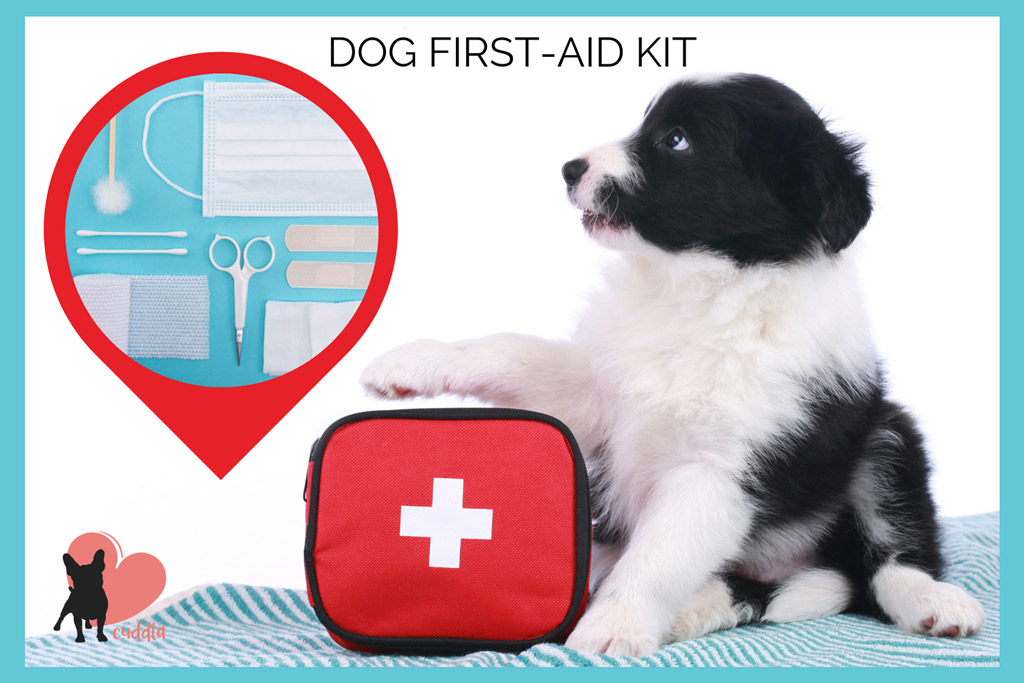
For your pooch’s great health, prevention is key. This is where nutrition, exercise, grooming and a dog-friendly environment makes a difference in your dog’s life quality. However, your dog might still get sick.
Maintaining Your Dog’s Health
Regular visit’s to your vet is part of maintaining your dog’s health and keeping an eye on current illness, if any.
Regular Physical Examinations
Periodical physical examinations are great to assess your dog’s health and also might diagnose a disorder.
Similarly, your dog may reveal signs of pain when the physical examination is carried out by deep palpation technique. She might show signs of discomfort or pain when her stomach or the back regions are examined.
Also, it is possible to detect acute renal disorders by pressure based palpation. For example, a dog affected by cystitis with severe retention of urine is often diagnosed by mere physical examination.
Auscultation of the heart in both right and left sides helps to rule out the abnormal heart sounds. Plus, pulmonary area based auscultation reveals the respiratory system disorder like pneumonia.
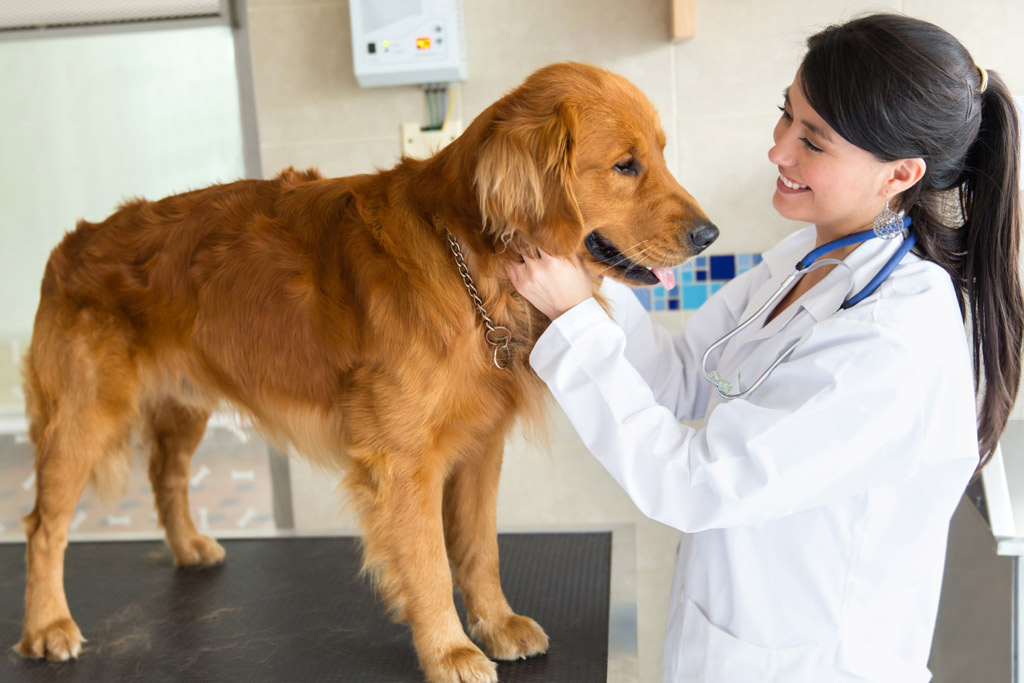
Why Are Regular Check-Ups Important?
Again prevention is key to ensure your dog’s health. By having regular check-ups you possibly be able to detect and address an illness before it advances to much.
If your furry friend has any signs of illness, then don’t wait for the regular check-up. Instead, you need to approach the veterinarian immediately.
Regular check-ups work as a preventive method. Also, your vet will administer vaccinations against canine distemper, parvovirus, coronavirus, rabies virus, hepatitis virus, and more. Booster vaccinations will be carried out in such cases without any delay in the injections. This helps to improve the immunity level of your dog against such diseases to a remarkable degree.
In addition, regular check-ups are essential to rule out the external parasitic conditions like lice or tick infestations. Also, dental problems can found out during the visits to the vet.
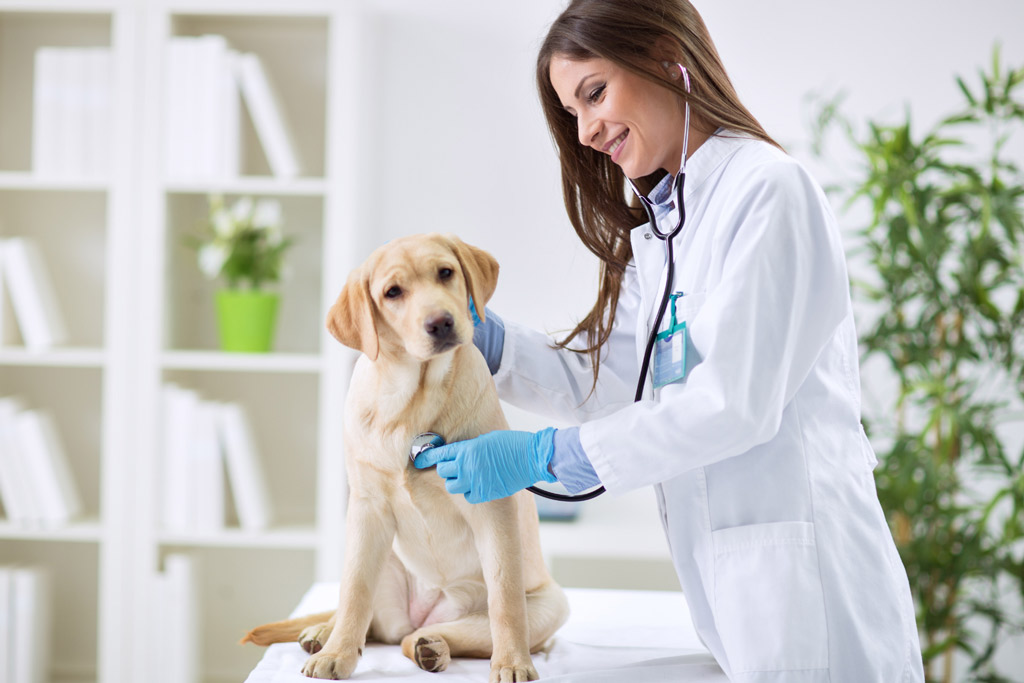
What Happens During an Examination?
First, you need to take your dog on a lead and place him on the examination table.
If your dog is trying to avoid a thorough examination by the veterinarian, just try to distract her by scratching her behind the ears, talking sweet to her, etc.
However, there are obedient pets, which will remain calm during an examination, so just praise your dog’s good behaviour every time. 🙂 You can give him treats and just massage his belly.
Only on the occasion when a dog might feel the urge to bite the veterinarian you should use a muzzle.
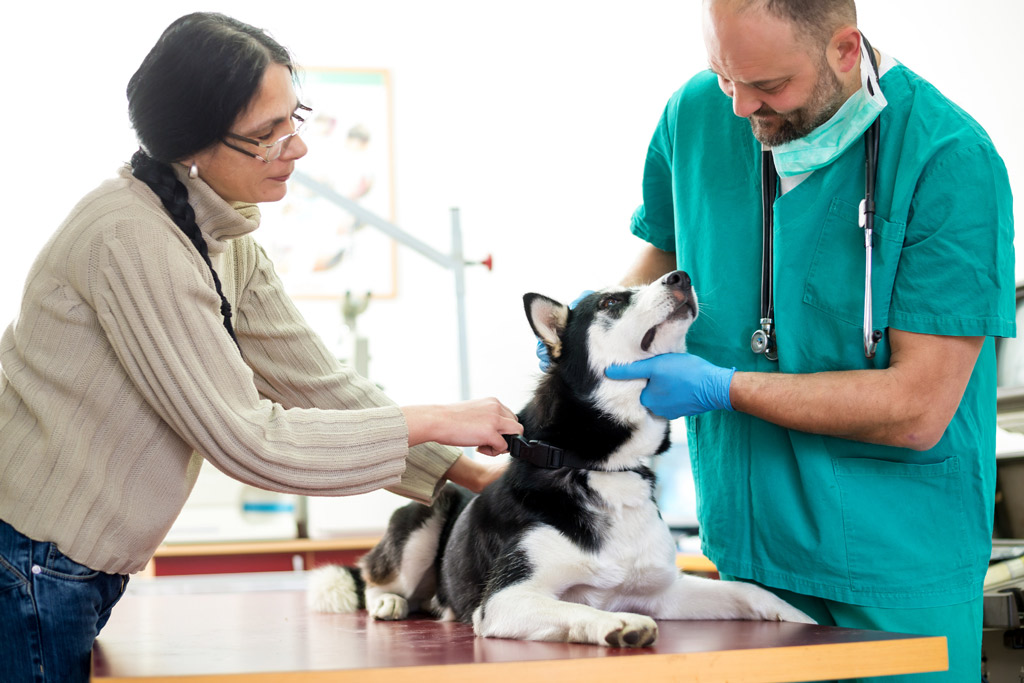
How Often Should a Dog Be Examined?
For an adult dog, twice a year is the general recommendation. It’s best to take them with the change of season: spring, to prepare them for the heat, and autumn, to prepare them for the cold season.
In conclusion, it’s best you check with your chosen vet to agree on a schedule that adjusts to your dog’s needs and condition.
Vaccinations Schedule
Vaccines main goal is to improve your dog’s resistance against some specific diseases causing frequent problems in dogs. Always check with your dog’s vet for the vaccination schedule.
The vaccination schedule usually starts at the age of 5 to 6 weeks. It is always better your pup has a worming treatment before the vaccination. The booster dose for each vaccine needs to be given at an appropriate time and this helps to build up the immune status to an appreciable manner.
Prior to this age, maternal immunity will be helping the animal to have natural disease resistance. Puppies that are orphaned due to the death of their mother or haven’t spend enough time with her, have lesser protection in their immune system.
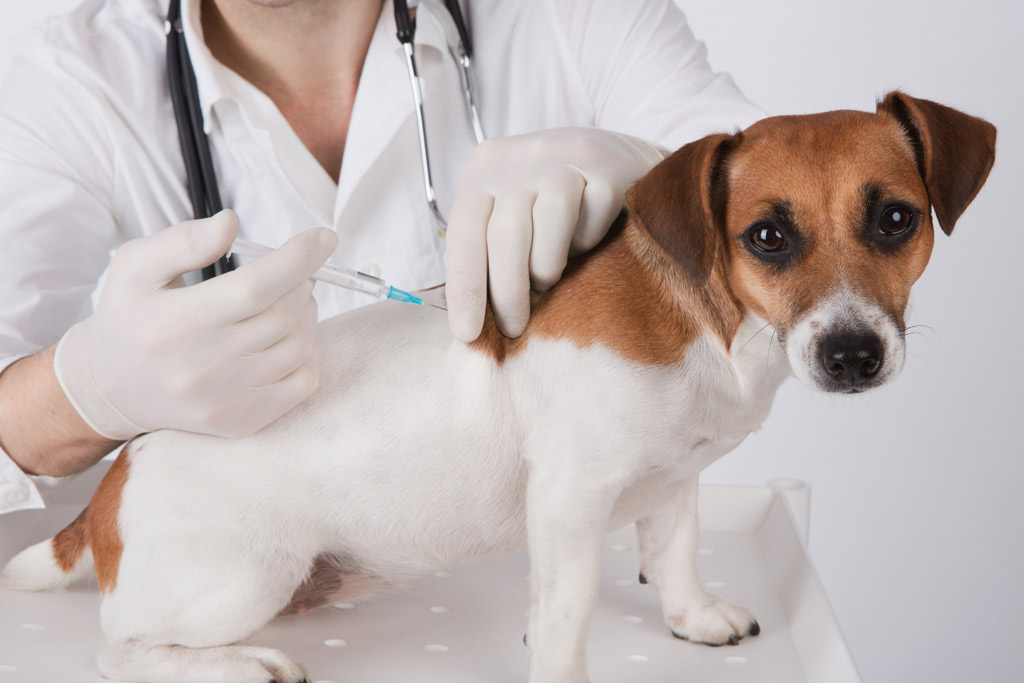
Dog Dental Health
Dog health also applies to oral care. If there is evidence of bleeding from the mouth, your dog needs to be examined thoroughly for any dental abnormality.
Puppies or sometimes adult dogs also may have teeth injuries. They need to be attended immediately as a preventive step. If not, they might end up in a bacterial infection.
Once your dog is comfortable with you touching his mouth, lift his lips and examine his gums and teeth. His teeth should be clean, without brownish stains.
Also, don’t expect to see pearly whites in an adult dog. Yellow staining is normal for pets that are no longer puppies and kittens. Even professional cleaning doesn’t remove staining unless a bleaching agent is applied.
Once you’ve inspected your dog’s mouth a few times, you’ll become familiar with his teeth and gums. Be sure to notice the smell of his breath and note any changes.
If you observe any of the following signs, schedule an appointment with your veterinarian, preferably one who practices holistic medicine, as soon as possible:
- Bad breath (especially if you notice a change).
- Inflamed gums.
- Excessive drooling.
- Unusual lumps on the gums or under the tongue.
- Loose or bleeding teeth.
For dental hygiene practices, like how to brush your dog’s teeth, check our Dog Grooming at Home blog post.
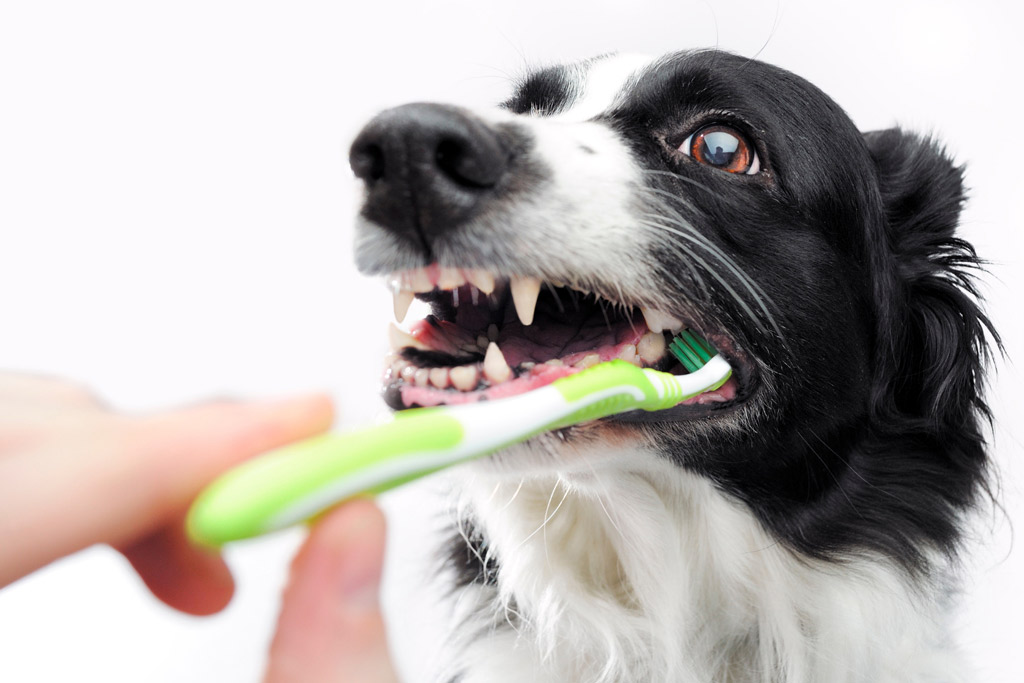
Spaying and Neutering
Spaying and neutering dogs are highly practised. This is a surgical approach to sterilization in female and male dogs, respectively. Spaying is used when referring to both sexes.
However, you might find that there’s no need for these practices to maintain your dog’s health whilst still avoiding unwanted pregnancies for your pooch.
Beliefs About Spaying
Dogs in the U.S. are routinely spayed or neutered between the ages of 4 and 9 months.
If your large or giant breed dog absolutely must be spayed or neutered the conventional way, it is recommended to wait until full musculoskeletal maturity has been reached, and in females, until after the first estrus cycle.
“The decision to perform this procedure is often based on convention, habit or misconception of health benefits rather than on an evidence-based assessment of each patient.”
Dr Clara Goh, a surgical oncologist at Colorado State University’s Veterinary Teaching Hospital.
Facts About Spaying
A study from the U.K. suggests there isn’t much scientific evidence at all to support the idea that early spaying of female dogs decreases or eliminates the future risk of mammary tumours or breast cancer. This has been a much-promoted supposed benefit of early spays for decades. But as it turns out, it’s based on theory rather than scientific evidence.
Similar to the situation with early spaying and mammary tumours, there’s a common belief that neutering a male dog prevents prostate cancer. However, a small study conducted at Michigan State University’s College of Veterinary Medicine suggests that neutering – no matter the age – has no effect on the development of prostate cancer.
So, it’s getting proven than spaying or neutering dogs no longer decreases or prevents reproductive organ disease. Furthermore, it increases the risk of other diseases, including obesity, musculoskeletal disorders and several types of canine cancer. New researches are adding more negative consequences to the risk list.

Best Spaying Practices
In conclusion, it is preferable to perform a sterilization procedure that spares the ovaries or testes instead of a full spay or neuter, however, there are not many veterinarians in the U.S. who are trained to sterilize rather than desex.
Additionally, ovary-sparing spays are equally as effective as traditional spays at preventing unwanted litters, but they are less invasive and eliminate the risk of endocrine damage.
How to Avoid Unwanted Pregnancies
In many European countries, there are intact free-roaming dogs running about under voice control of their owners. When female dogs go into heat, owners simply manage the situation by removing them from group social events until their heat cycle is complete. They’re kept at home, sequestered away from males. They’re walked on a lead.
Ted Kerasote tells the story of a British veterinarian he interviewed who said most of the requests he gets to neuter dogs come from U.S. and Canadian citizens who are living in London.
Rather than immediately complying with the request, the veterinarian talks with the pet owner about the actual necessity to desex the dog.
For example, if the dog is always on a leash and always under the owner’s control, then how exactly would the dog become pregnant (or mate with a female) if it’s constantly with the owner and never off-leash? The veterinarian says that he rarely has a British pet owner request a spay or neuter procedure.
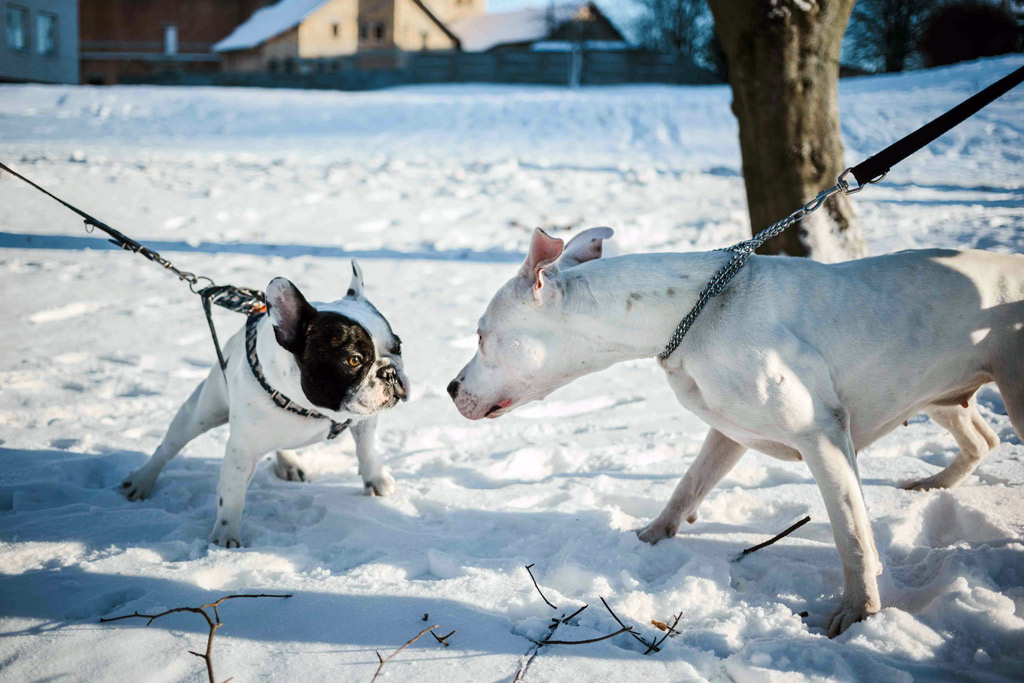
Dog Health Checklist
As part of maintaining your dog’s health routine, you can follow this checklist to complete a thorough examination of your dog, once a month. This way you could help pick up any early signs of illness or injury.
Your Dog’s Ears
Keep them clear of wax regularly. Healthy ears shouldn’t have any bad odour, redness or thick brown wax. Find out how to clean your dog’s ear at our Dog Grooming at Home blog post.
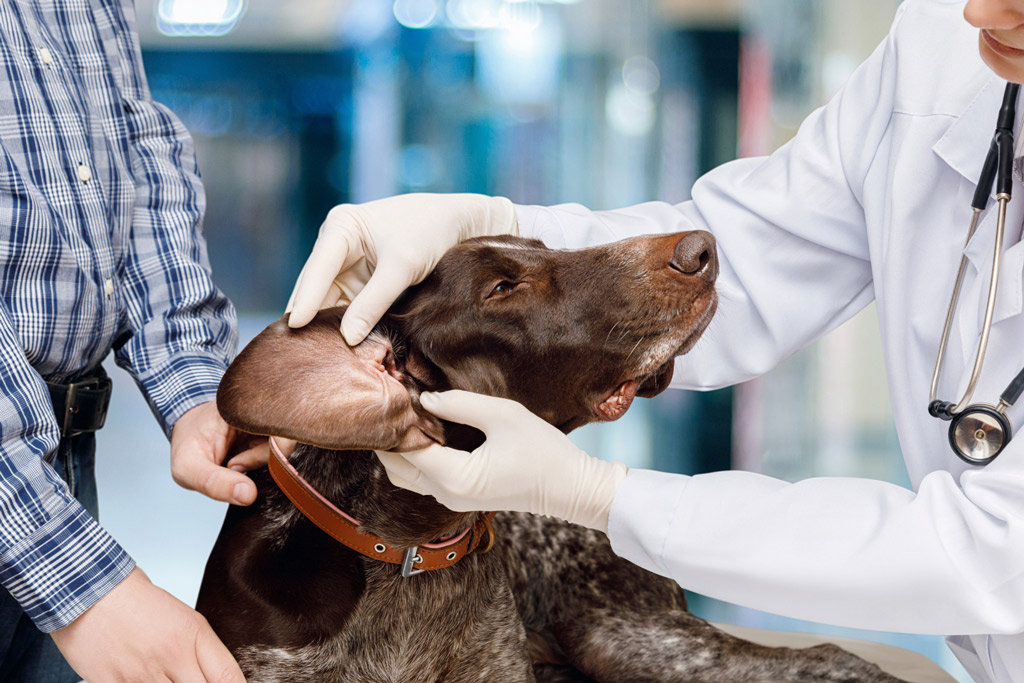
Your Dog’s Eyes
Healthy eyes are bright and clear, with no signs of redness, soreness, cloudiness or running (watery).
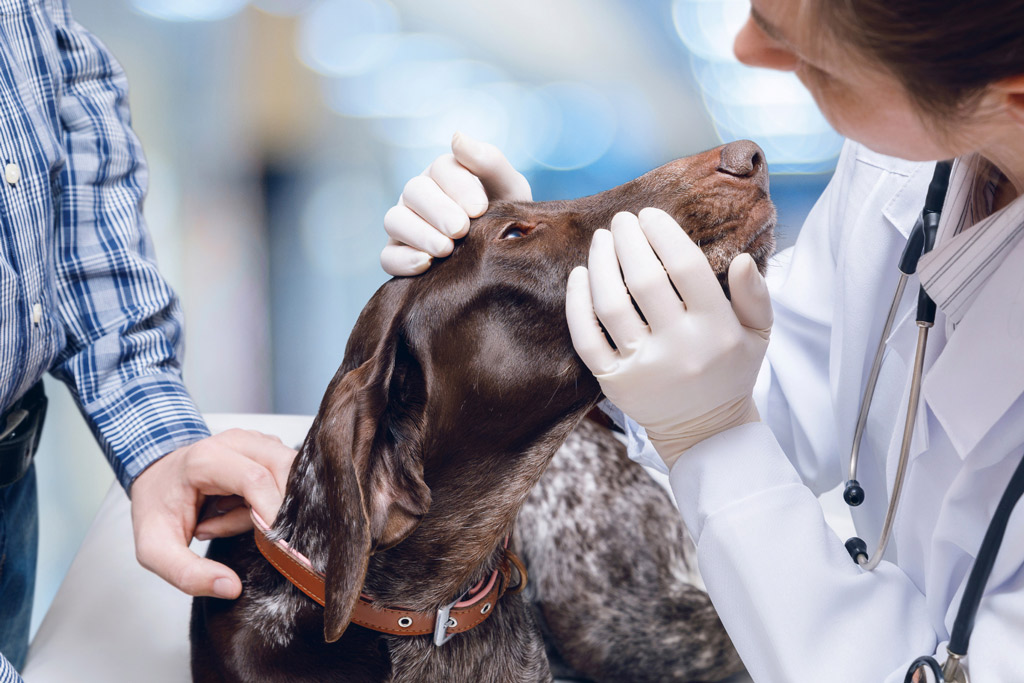
Your Dog’s Nose
Your dog’s nose shouldn’t be excessively runny. Plus, a wet nose does not necessarily mean your dog is fine; that’s an old myth.
Also, you might notice your dog’s nose changes colour, from black to pink and back again. This is normal and nothing to worry about.
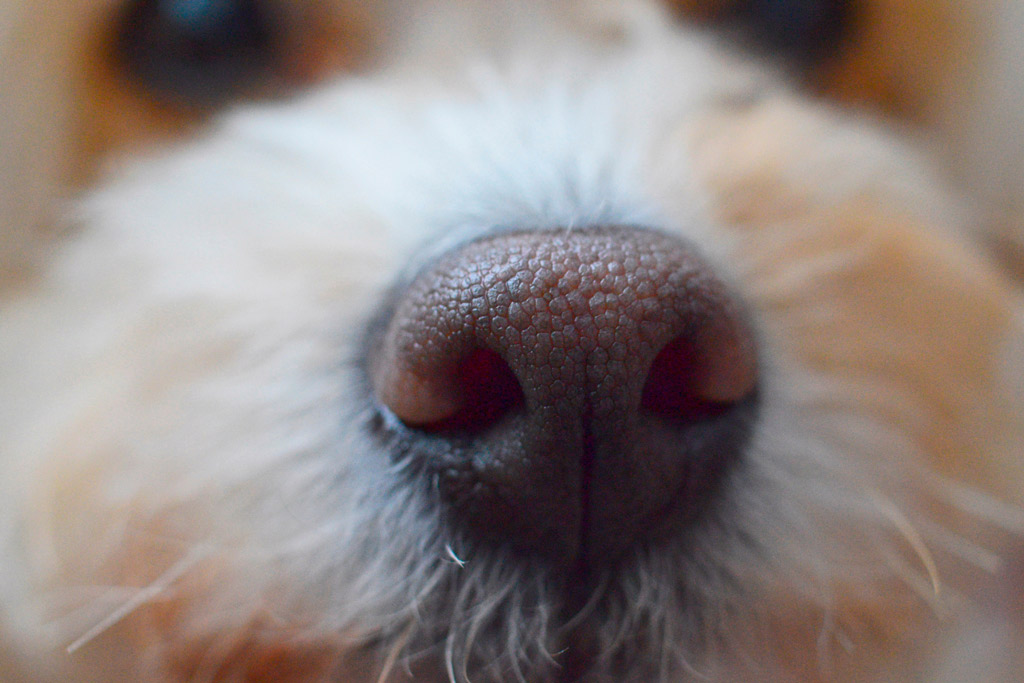
Your Dog’s Mouth
Daily oral care is a must to keep your dog’s teeth and gums healthy. Your dog shouldn’t experience bad breath, which can be a sign of illness, such as an underlying digestive or kidney problem. Also, your dog shouldn’t have red or swollen gums, discoloured teeth or bacterial plaque.
When you’re looking into your dog’s mouth, their teeth should be white or cream with no excess tartar (thick brown build-up). Their gums should be a healthy pink or black, depending on their skin pigmentation, but not red.
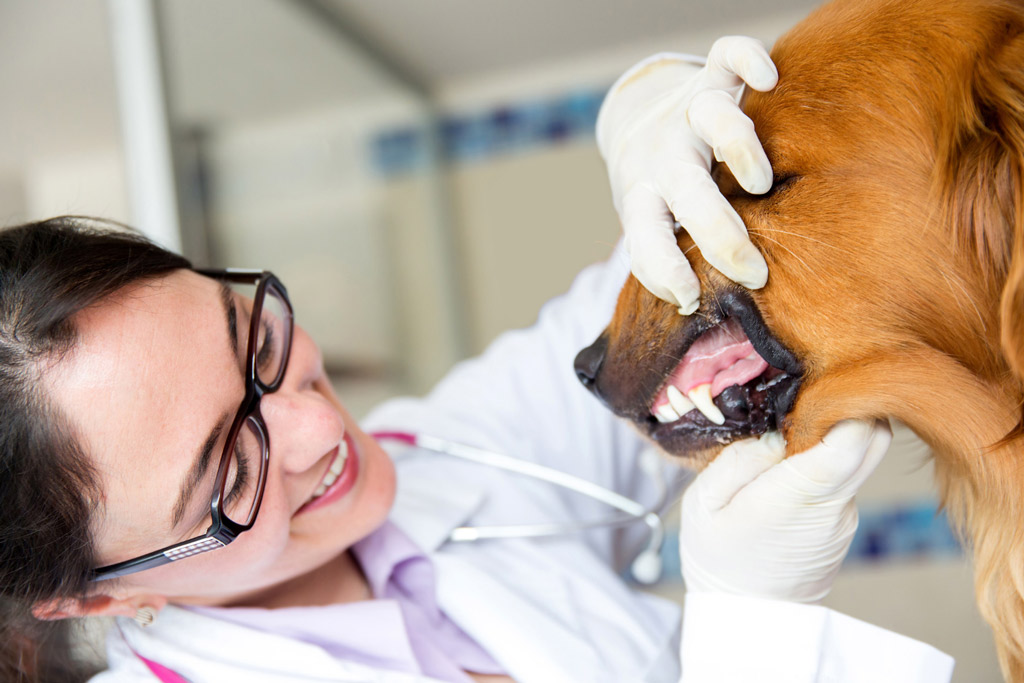
Your Dog’s Skin and Coat
Healthy dogs’ skin can be pink or black, depending on your dog’s breed or individual genetic history. To check for any dog skin problems spread their fur with your fingers and check for any crusting, itching, scaling, or hot and inflamed areas.
Your dog’s fur should be clean, smooth, shiny and healthy-looking. There shouldn’t be any bald patches, dandruff or fleas. Also, your dog shouldn’t experience excessive shedding.

Your Dog’s Paws and Nails
When checking your dog’s nails, they should be smooth and fully formed. They can be black or white. Find out how to clip your dog’s nails at our Dog Grooming at Home blog post.
Don’t forget to check your dog’s dewclaws too; you will find them on the inside of their leg just above the paw. Some dogs only have them on their front legs, some have them on all four while others don’t have any dewclaws at all.
Also, you should keep your dog’s paws clean. Make sure that your dog’s paw pads are not burnt due to chemicals, walking or running on hot pavement.
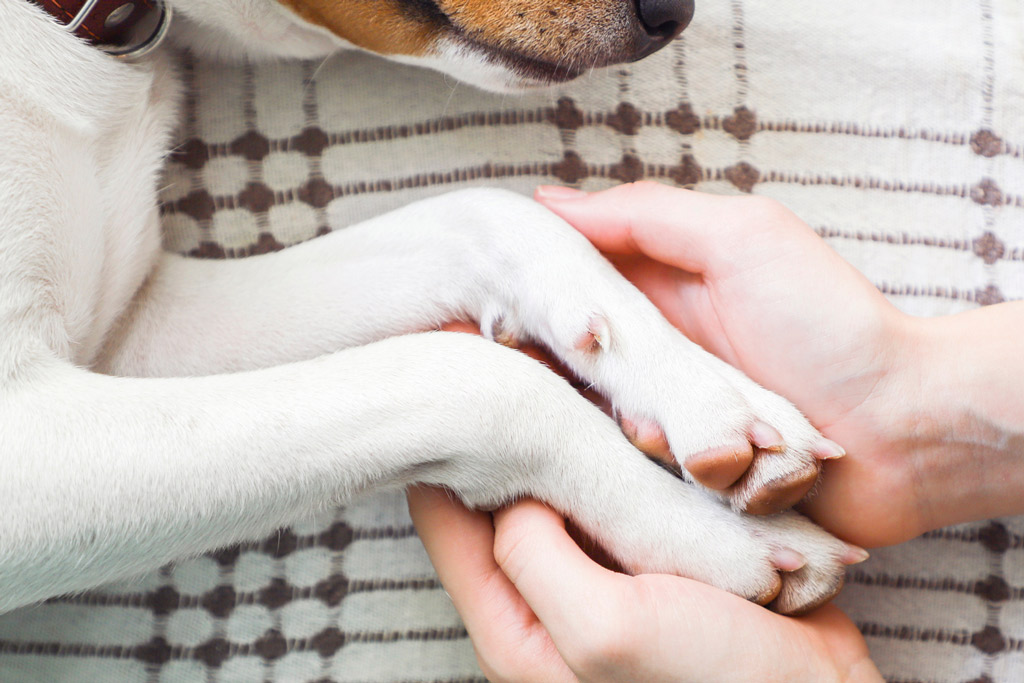
Your Dog’s Bones and Joints
Your pooch should be able to move around with agility. Look for any signs of limping, hesitation to walk or trouble to stand. Older dogs, for instance, can get stiffer joints and their mobility can suffer a lot more.
Your Dog’s Weight
A visible “waist” and a slight tuck-in behind the ribs are good markers to look for your dog’s healthy weight. Also, if your dog’s weight is average, you should be able to feel the ribs. However, you shouldn’t be able to see them – which would mean your dog is too skinny.
For a species-appropriate balanced diet, check our Dog Nutrition blog post.
Your Dog’s Heart and Lungs
Frequent coughing, sneezing, wheezing or laboured breathing should be notified to your vet. Also, if your dog gets tired more easily than usual, you should take that to the vet too.
Your Dog’s Digestive System
Dogs that follow a balanced diet have a normal appetite, regular toilet habits and stool quality tend to be relatively consistent. They shouldn’t present any signs of diarrhoea and vomiting. Watch out for passing gas, stools of different consistency, and excessive burping.
Occasional eating and regurgitation of grass can be normal, but other than that you want to take notice of any reluctance to eat or difficulty when trying to eat food.
Your Dog’s Urinary System
For a house-trained dog, any changes in your dog’s urination should raise your concern. Urinating larger amounts or with greater frequency, passing urine that smells or looks different, or having trouble urinating are not healthy signs.
Your Dog’s Attitude
Since you know your dog better than anyone, you can easily notice a change of attitude by paying attention to your dog’s body language. For example, if you notice that their head and tail are down and they seem scared, your pooch might be experiencing some stress.
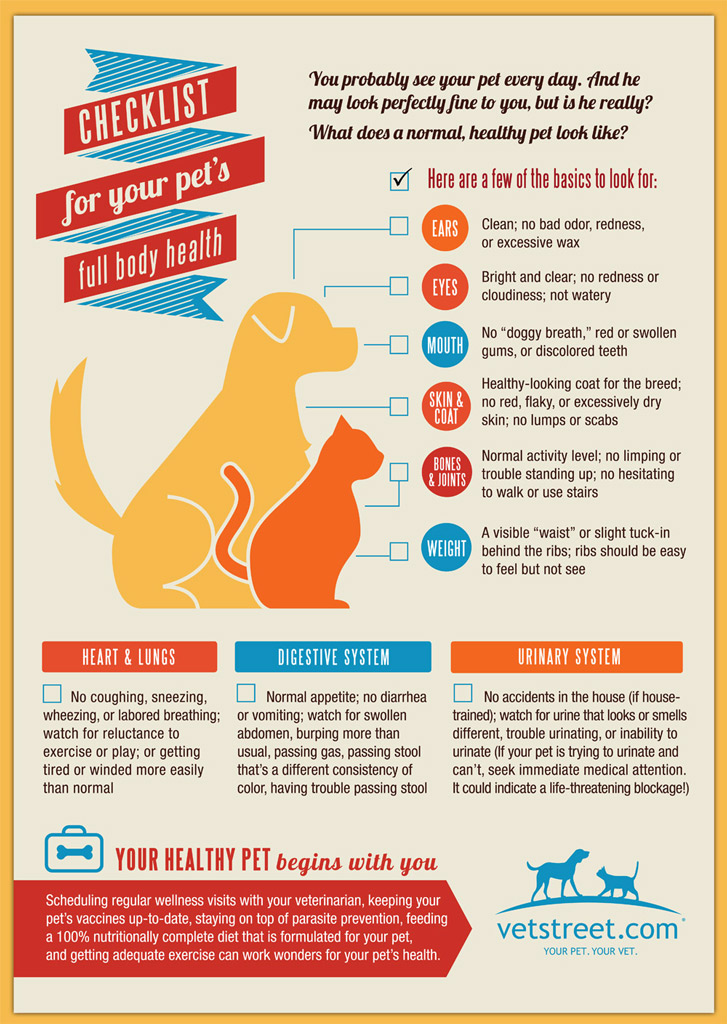
Common Dog Health Concerns
Parasites
Dog parasites such as worm, fleas, ticks, mites and lice should be eliminated as soon as possible. There are many commercial products for different parasite treatments. However, there are also natural parasite treatments and prevention tips that you can use.
They can cause high discomfort, including skin rashes and irritation, itchiness, fever, diarrhoea, etc. For more information about dog parasites, check our Dog Parasite Prevention and Treatment blog post.
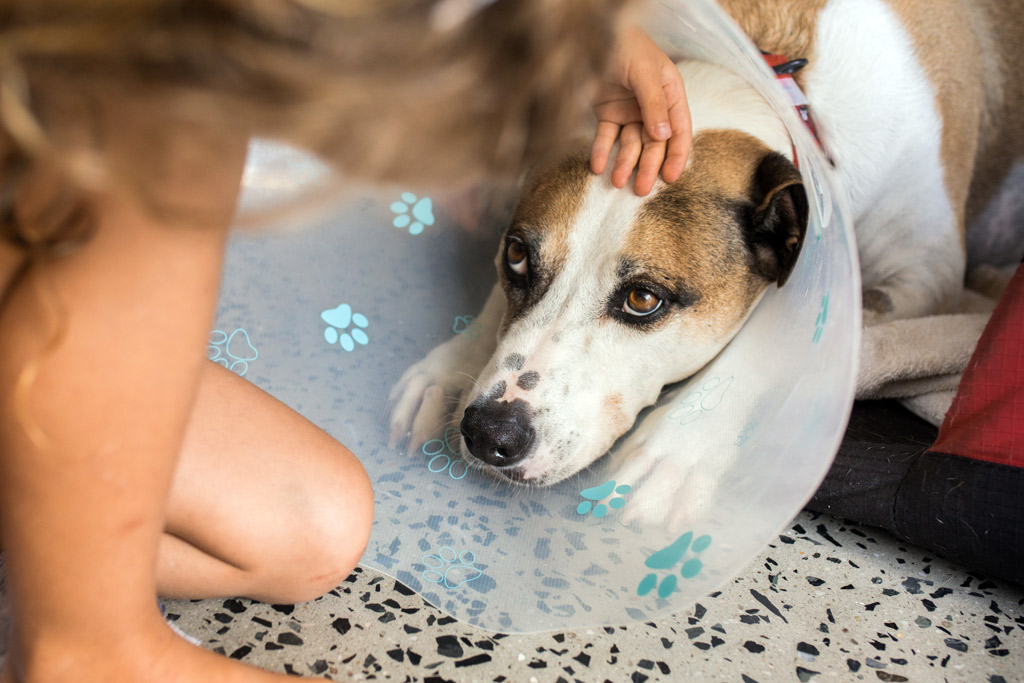
Obesity
According to The Kennel Club, canine obesity is one of the fastest-growing health concerns affecting dogs today and can occur in dogs of all ages and types. It is estimated that between 30% and 60% of dogs are overweight.
However, it’s also one of the most preventable diseases. It can be prevented and reversed through a balanced diet and exercise. For more information, check our Dog Obesity blog post.
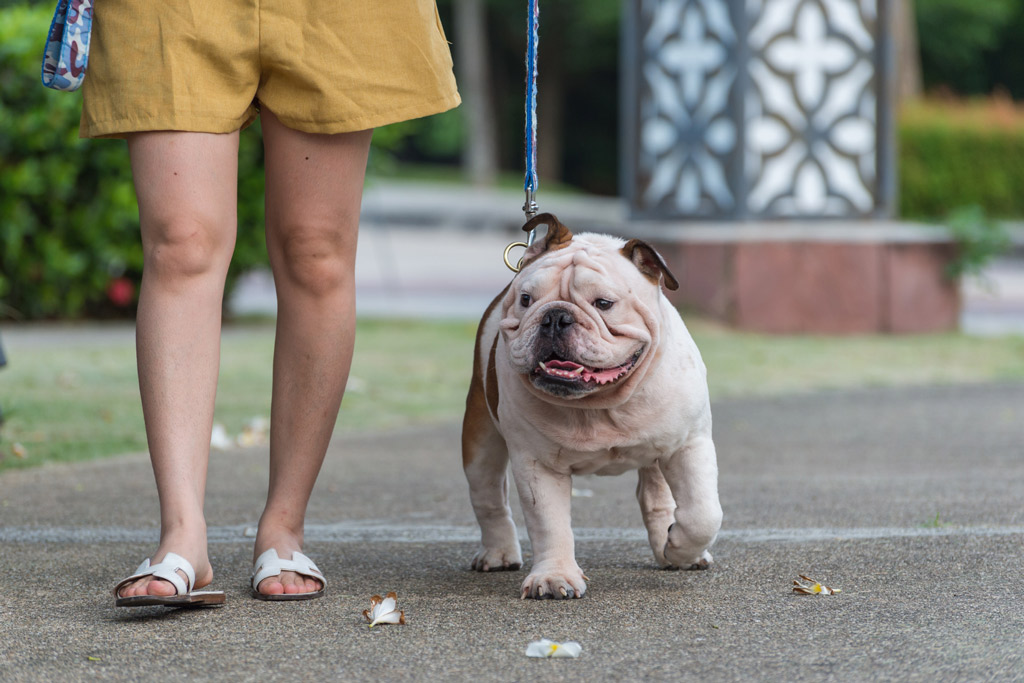
Ear Infection
They often cause dogs to shake their heads and scratch their ears. As a sign of ear infection, you will also find a discharge or debris. Your dog will feel itchy and might even feel pain.
When left untreated, they can cause serious damage. If your dog is exhibiting signs of an ear infection, go to your vet. Ear infections may be related to parasites (ear mites) or allergies. Best way to prevent is to keep your dog’s ears clean.
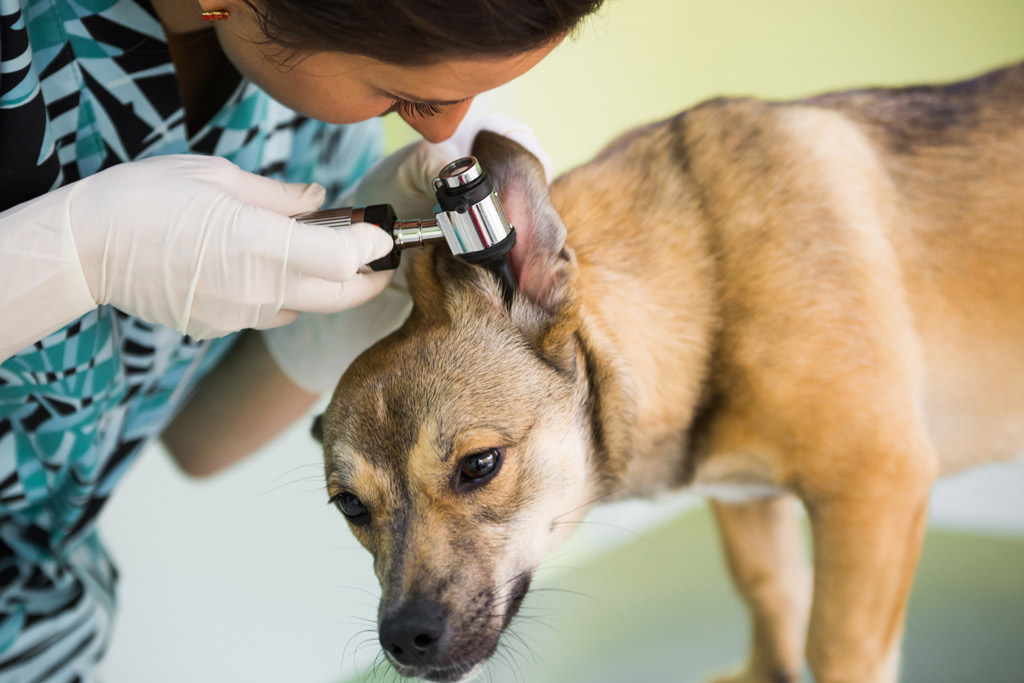
Urinary Tract Infection
Urinary issues are common in dogs. Signs of UTI include inappropriate urination, excessive urination, increased thirst, and lethargy. In any case, plan a visit to your vet for an accurate diagnosis and treatment.
If your dog is house-trained, any unusual urinary behaviours can indicate that there’s an underlying disease. Urinary incontinence is the involuntary leakage of urine. It’s important to understand that dogs with the condition cannot control the leaking and it isn’t a behavioural problem, i.e., submissive urination. That’s why it is very important not to punish these accidents.

Vomiting
There are so many reasons a dog can develop vomiting. It can be a sign of toxicity, gastrointestinal blockage or other serious diseases.
While you don’t need to rush to the vet every time your dog throws up, it’s also not something to ignore. So, if vomiting occurs a few times throughout the day and it continuous the next day, contact your vet.
Diarrhoea
Diarrhoea may accompany vomiting or simply occur on its own. The potential causes of diarrhoea are similar to those of vomiting. It might be the results of a dietary indiscretion or it may be related to something more serious, such as an infectious disease or ingestion of toxins.
While one or two episodes of diarrhoea are no emergency, ongoing diarrhoea can lead to dehydration. Always take your pooch to the vet if diarrhoea persists.
Poisoning
Dogs are curious creatures and big opportunist. So, it’s our duty to keep harmful foods, plants, medications and cleaning products away from their reach.
For a complete list of toxic foods for dogs, check our Dog Nutrition blog post. Also, for a toxin-free environment, check our How to Make Your Home Dog-Friendly and Safe blog post.

Arthritis
It consists of the inflammation of joints. In dogs, the most common form of arthritis is osteoarthritis, also called Degenerative Joint Disease. Also, it is more common in senior dogs.
Osteoarthritis is a chronic progressive condition, i.e. once it begins it will continue to gradually get worse. There is no cure, however, there are many treatments available that can slow the disease progression and relieve some of the pain, stiffness, and discomfort it causes.
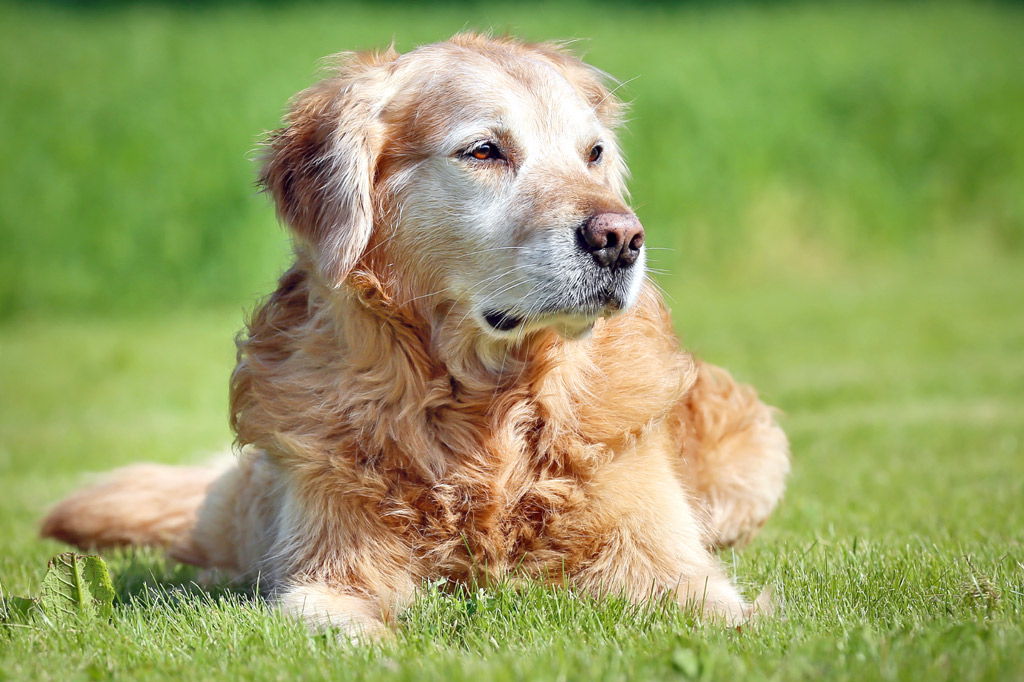
Dog Health Deterioration
If you want to know more about taking care of older dogs, read our blog post about how to protect your dog against ageing due to excessive cellular deterioration.
Signs of Health Deterioration
Protect your dog against ageing. Discover which are the dog health deteriorating signs and take action to improve your dog’s health.
The two biggest factors that influence your pet’s rate of cellular ageing are diet and environment. However, there are more factors that contribute to your furry friend’s ageing process:
- Eating a commercially prepared, processed diet.
- Obesity and a sedentary lifestyle.
- Drinking chlorinated or fluoridated water.
- Exposure to toxins in the environment, indoors and outside.
- Excessive vaccinations.
How to Protect Your Dog Against Aging
To begin with, the good news is you can also influence these same factors (diet and environment) to help protect your pet against some of the potentially negative effects of ageing.
Here are some simple steps you can take:
#1 – Antioxidants
First of all, make sure your pet gets enough antioxidants in his or her diet (berries are a great source of antioxidants).
#2 – Bodyweight
Secondly, maintain your pet’s ideal body weight and keep your pet active throughout her life. Nothing that cannot be achieved with good nutrition habits and nice walks.
#3 – Hydration
Don’t forget about the importance of good hydration! Supply drinking water that’s been filtered through a high-quality water purifier (this depends on the quality of the water where you live).
#4 – Air Toxins
Use an effective air purifier in your home to reduce airborne toxins. Alternatively, we prefer to use houseplants like Spider plant and Chrysanthemum for great air quality free of toxins.
#5 – Product Toxins
Avoid toxic home furnishings, synthetic air fresheners, and harsh chemical-laden cleaners.
#6 – Vaccinations
Minimize unnecessary vaccinations (Dr Karen Becker recommends to request antibody titer tests to determine your pet’s true need).
#7 – Shampoos and Treatments
Finally, avoid shampoos and treatments such as flea and tick treatments that contain potentially hazardous ingredients and harsh chemicals.
Insider Tip: Of the seven steps outlined above, getting enough antioxidants may be the most important thing you can do to protect your dog!
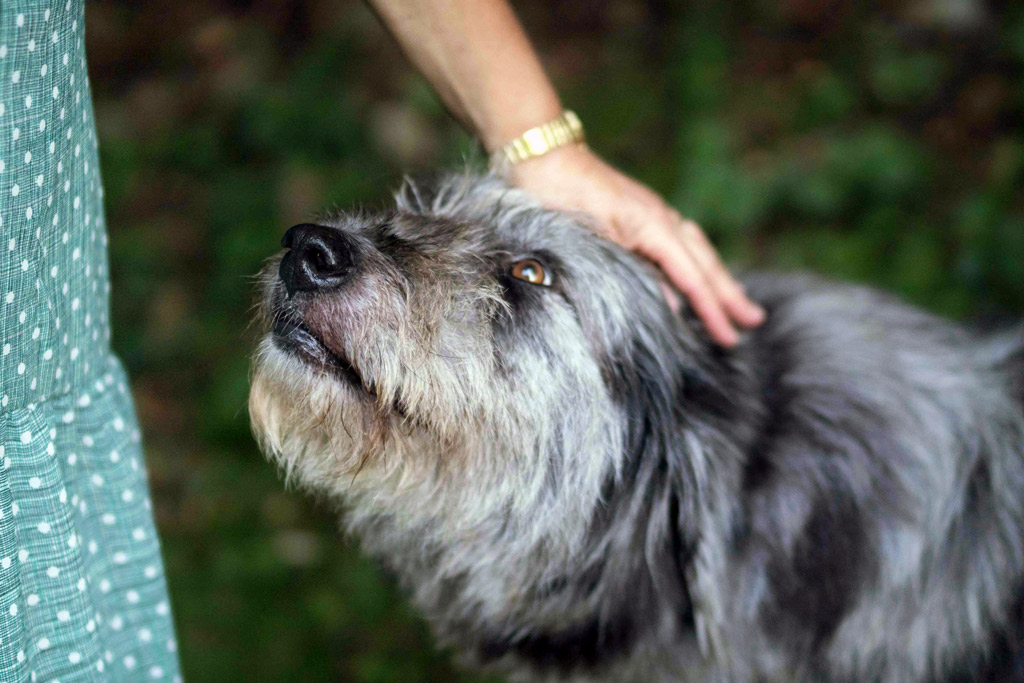
Dog Health Essentials
Find a Veterinarian
First of all, find a veterinarian that shares your values. It’s important to know which treatment approach you prefer for your pet. In veterinary medicine, there are allopathic practitioners, holistic practitioners, and integrative practitioners.
Allopathic Veterinarians
They had a traditional western or conventional medical training. The general approach of allopathic vets is to treat symptoms of illness or disease with drugs and/or surgery. The primary focus is on treating existing symptoms.
Holistic Veterinarians
They have the same training than allopathic vets. However, they pursue additional training in alternative methods of healing, including herbs and nutritional supplements, chiropractic, acupuncture, homoeopathy, and nutrition and movement therapy.
The focus of holistic veterinarians is to promote wellness and prevent health problems from developing.
Integrative Veterinarians
They combine the two approaches, both western and alternative medicine, to their treatment of patients. Also, both types of medicine have practical application in the care of pets.

Dog Health Insurance
Like any other insurance, pet health insurance is something that requires consideration by dog owners. There’s no right or wrong answer, you just need to decide what’s best for your situation.
There are different insurance coverage, some cover the cost towards surgeries, radiographic examinations, treatment of specific conditions, laboratory fees towards the undertaking of various laboratory examinations, and more.
Insurance companies urge pet owners to enrol their dogs as soon as possible, before he has any illness, accidents, or develops an inherited condition.
My recommendation is Petplan pet insurance, who cover a wide range of veterinary treatments for dogs.
Dog Identification
There are few things as devastating as losing your beloved dog because he went astray. Even if your furry friend is only temporarily lost, the fear and grief can be overwhelming. Dog owners who never recover their dog can suffer from prolonged feelings of guilt and heartache.
Nowadays, there are many ways for dog owners to ID and track your companions so that if they do go missing, the chances of finding them are improved. Every method for ID’ing your dog has pros and cons, so the ultimate decision is yours. You should consider your dog’s personality and lifestyle, as well as your comfort level with the identification method and the financial cost.
Microchipping is mandatory in some countries like the U.K. and U.S. However, some dog parents might want to add a GPS collar on top of it, to feel secure.
Insider tip: The ultimate goal is that your dog has an up to date identification at all times for your dog’s safety.

Here are some of the most common options that you can consider:
Microchips
They are embedded in your dog, so it’s a permanent ID method. These kinds of electronic chips need to be implanted behind the ears. It will hold data embedded in it.
Microchipping is hugely popular these days and has become the standard method for identifying lost or stray pets.
Standard ID Tags
Most of the time, your telephone number and your name will be in a place in the tag.
Plastic and metal dog identification tags are available in multiple colours and the dog owners can choose the colour they want. However, many select the reflective type of dog tags along with the collars. Hence, we can identify dogs even in darkness to a greater extent.
Digital ID Tags or Collars
In order to be effective, your dog must wear it 24/7 and you should keep the information on the tag up-to-date. It requires that you have an online account, your pet’s profile uploaded, and your pet’s tag or collar linked to the profile.
USB ID Tags
It is a flash drive that attaches to your dog’s collar or harness and holds a wealth of information on your pet that can be accessed by plugging the drive into a computer.
GPS Tracking and Radio Frequency Identification Devices (RFID)
These devices are two more methods for keeping track of your dog, but they aren’t helpful to the person who finds your lost dog.
GPs tracking devices like Tractive are more appropriate for pet owners interested in monitoring the whereabouts, including when of off-leash.
First-Aid Kit
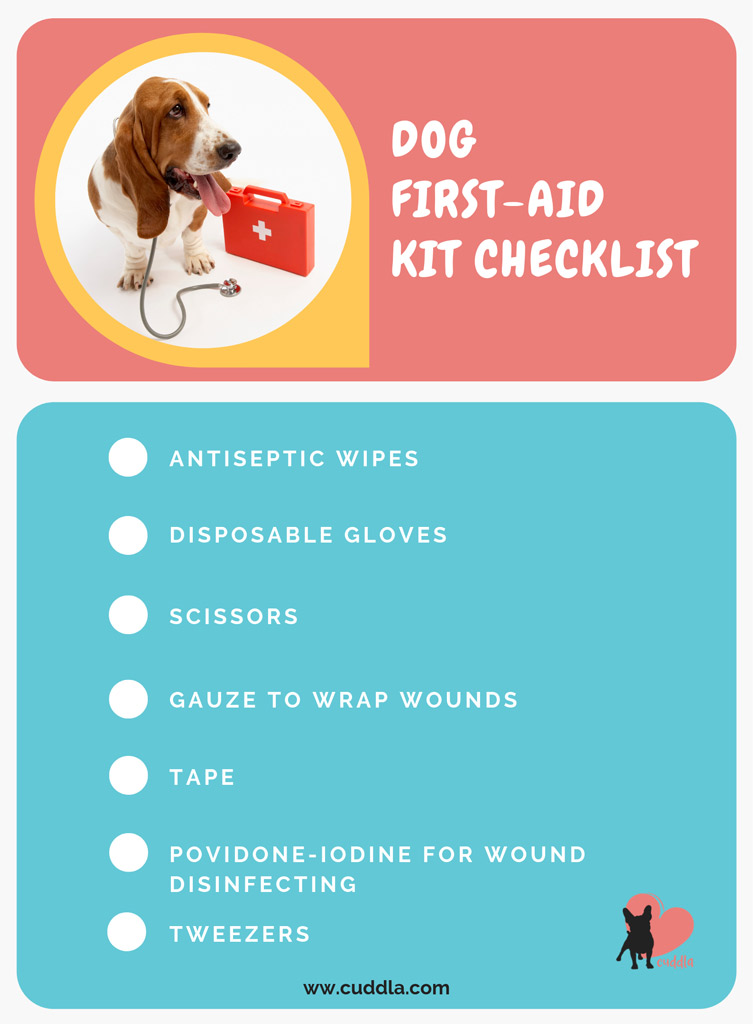
Also, remember to have at home an emergency first-aid kit for your dog containing:
- Antiseptic wipes.
- Disposable gloves.
- Scissors.
- Gauze to wrap wounds.
- Tape.
- Povidone-iodine for wound disinfecting.
- Tweezers.
Have a look at a range of dog first-aid kits of on Amazon.
P.S. If you want to know more about dog care, check out our The 5 pillars to a happy and healthy dog blog post.
